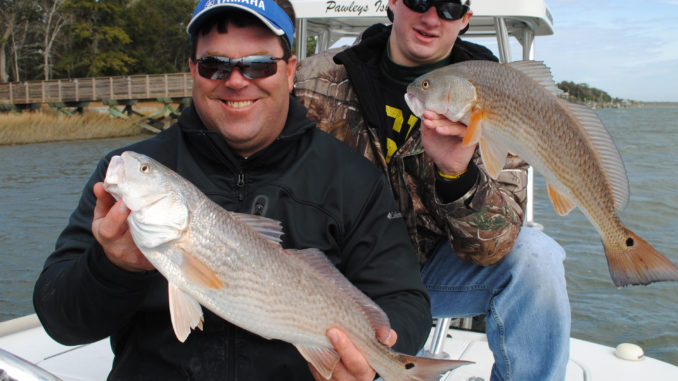
It can be ‘scary’ shallow, but this sprawling bay is full of fish and empty of fishermen.
Rob Beglin of Pawley’s Island is convinced that Bulls Bay is the best place to catch redfish and trout outside of Louisiana.
“It’s overwhelming,” said Beglin, who runs Inshore Xtreme Charters. “There are so many places you can fish. You catch 10 or 15 off one place and start second-guessing yourself. ‘If I started over there, would I have caught more?’”
Even better, you’re not likely to have a lot of competition from other boats. Located halfway between Charleston and Georgetown in a relatively undeveloped part of the coast cuts down on the number of fishermen who visit the tens of thousands of acres of skinny water.
“It’s the perfect situation, and nobody’s fishing it,” Beglin said.
Part of the problem is the area’s geography. The bay is overwhelmingly shallow. Many fishermen new to the area are a little reluctant to take a chance on spending six hours on a sandbar waiting for the tide to come in after venturing a few feet out of deeper water onto unmarked shallows. Beglin demonstrated it one day, having to idle for almost a quarter-mile after fishing a bank filled with oyster rakes for redfish before reaching water deep enough that he could get his flats boat up on plane to leave the area.
“I’ve fished here for 15 years, and I didn’t have a GPS when I started,” he said. “I had to learn it at low tide to find out where you can run.”
But the bay is full of fish — reds, speckled trout, flounder — and it’s one of South Carolina’s less-pressured fisheries, just about at its fall peak.
“In the fall, the shrimp show up, the finger mullet and menhaden are running, and the water’s cooling down,” Beglin said. “The reds really start ganging up before Thanksgiving, and the boat traffic calms down in November. Depending on the weather, the trout may stay awhile. If the water temperature stays in the high 50s, they’ll stay around.
“The reds will stay put. They’ll get in pockets where they know they can get food and be safe from dolphin. Thanksgiving is probably the best time, because they’ll be ganged up, but they’ll still be aggressive.”
Two public landings service Bulls Bay: Garris Landing on Sewee Bay and Buck Hall Landing in the Francis Marion National Forest, several miles north and close to Five Fathom Creek, which is considered the “dividing line” between Bulls Bay and Cape Romain. There’s also a private municipal ramp in the town of McClellanville, but it’s several miles farther north and offers much better access to Cape Romain’s marshes.
Here are some of Beglin’s favorite fall fishing holes for both trout and reds on the Bulls Bay end of things:
1 Oyster point, mouth Bull Creek
32 55 59W/79 35 951N
This oyster point, on Bull Island downstream from the mouth of Bull Creek, is a great spot to fish for redfish on a high and falling tide.
“Just when the water starts to drop out of the grass is the perfect time,” said Beglin. “When the tide gets lower, they’re more scattered out.”
Beglin pays attention both to the point and the mouth of a tiny drain creek about 50 yards downstream from the point.
“Fish will stack up around the mouth of that little drain. It can be really productive in front of that little creek when the water is falling,” he said.
Beglin likes to fish the point and mouth of the drain with a Redfish Magic spinnerbait or a live finger mullet drifted under a popping cork.
2 Bull Harbor bank
32 55 545W/79 36 328N
This long bank extends from the western side of Bull Creek all the way to the mouth of Anderson Creek, an area known as Bull Harbor. Beglin concentrates on the area from Bull Creek to the mouth of a drain creek about halfway down the bank.
“A rising tide from dead low up will be great,” Beglin said. “The bank is so steep, the reds can’t get up in the grass, but they’ll push up on that bank. You’ll catch mostly reds on this bank, but you’ll catch trout in the fall coming out of that drain creek if the water is clear.”
Beglin likes to fish the bank with live shrimp, mud minnow or finger mullet under a popping cork.
“This used to be one of our automatic spots, then it dropped off for about three years, but the last couple of years, it’s turned back on.”
3 Bull Creek/Summerhead Creek bank
32 55 024W/79 36 731N
This quarter-mile stretch of bank is good on an east or northeast wind, the latter being common in the fall. Beglin starts fishing at a boat dock on Bull Island at the mouth of Summerhead Creek and works his way out and downstream.
“You’ll work the whole bank,” he said. “It’s a steep bank, and it will hold trout and reds. The trout will be right on the edge of the grass on high water. There’s a shelf out from the bank and a dropoff. I like to fish for reds at about mid-tide, rising or falling.
“The water will get crystal clear later in the fall and into the winter on this bank.”
4 Anderson Creek mouth oyster mounds
32 56 375W/79 36 968N
The point on the northern bank at the mouth of Anderson Creek features a series of a dozen or so different oyster mounds, scattered on a shallow flat. Beglin loves the area for trout and reds.
“I’ll fish for reds three hours before low tide and the first three hours on the rise, and trout from the middle of the rise to the middle of the falling tide,” he said. You can get all around behind the oysters or you can come at them from the outside.
“We’ve caught several very nice trout in here. They’ll get right up on top of the rakes on high tide. It’s a topwater deal for trout; you fish topwater around the tufts of grass that stick out of the tops of the rakes.
When he’s targeting reds, he fishes a spinnerbait or a soft-plastic grub on a jighead and casts right around the oysters.
5 Mouth of Blind Creek
32 56 644W/79 37 012N
Beglin calls the area where Blind Creek, a relatively small waterway, enters the open bay “a beautiful trout hole.”
He concentrates on the mouth of the creek, the point and a pocket to the left of the creek. “They don’t go up in the creek; they just come in and work the oysters and grab a bite or two,” he said. “We have literally sat here and caught trout until we got tired.”
Beglin said you want the tide high and falling, the first hour after high tide being the best time to target trout in the vicinity. He likes to fish it with a live shrimp or finger mullet under a float.
“The reds will get behind the oysters and the sandbars in the pocket on a falling tide,” he said.
6 Mouth of Venning Creek
32 57 449W/79 36 737N
Like Anderson Creek, Venning Creek is a major thoroughfare for boats heading for Bulls Bay from the ICW. Beglin starts fishing the point on the northern side of the creek mouth, and he works several oyster points north of the creek mouth.
“There are flats between all the oyster points, and they drop off. You work the points and the flats on out to the shelf,” Beglin said. “You’ll get some reds on low water in the pockets, so I always flip a bait in there behind the oyster rakes.
“All of the water on the north side of the creek mouth is good for trout on high water. There are so many rakes. Fish ’em all. I like to throw artificials here, Saltwater Assassin grubs on an eighth-ounce jighead. I key on four feet of water for trout.”
7 Venning Creek/Sewee Bay
32 57 350W/79 38 270N
This area appears to be an open bay, with the creek on one side and plenty of oyster rakes all over the banks.
“This is an excellent spot for trout on high water,” Beglin said. “See all the tufts of grass on top of the rakes? The trout will get up on them and ambush bait.
“I like to fish topwater baits around those tufts of grass at high tide, and grubs on a rising or falling tide. The trout are in that open bay, and when the water rises, they spread out on those rakes.”
Beglin said that when he’s targeting the tufts of grass, he likes to position his boat so he can cast parallel to the grass and work his Zara Spook back, keeping it in the strike zone longer.
“Everywhere you see a rake, you should be able to catch a trout,” he said.
8 Awendaw/Long’s Creek point
33 02 062W/79 31 095
This spot is several miles away from the others; although it’s on the bay side of the marsh, it’s almost directly across from the Buck Hall Landing, so it’s a short run and a great place to start or end a trip that begins at the landing.
This point actually separates Awendaw Creek from Long’s Creek, where both of them empty into Bulls Bay near the “White Banks” area. It’s across the mouth of Long’s Creek from Morants Point.
“You can catch reds and trout here,” Beglin said. “I fish the whole bank across from Morants Point. I like to fish it on high, falling water. It’s a great place to float a live bait.
“Make sure you fish all the little points. There are really some pretty oyster points along this bank.”
Rob Beglin of Inshore Xtreme Guide Service can be contacted at 843-458-1920.

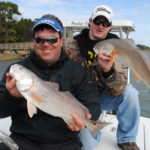
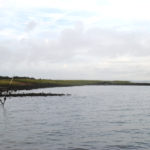
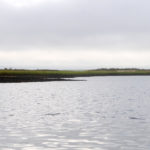
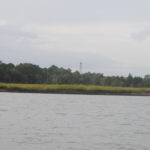
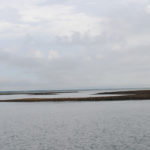
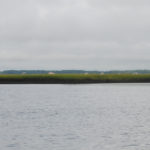
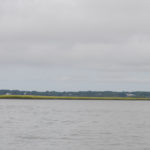
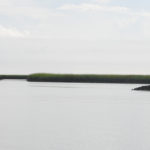
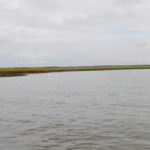
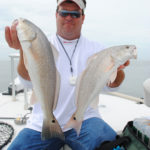




Be the first to comment